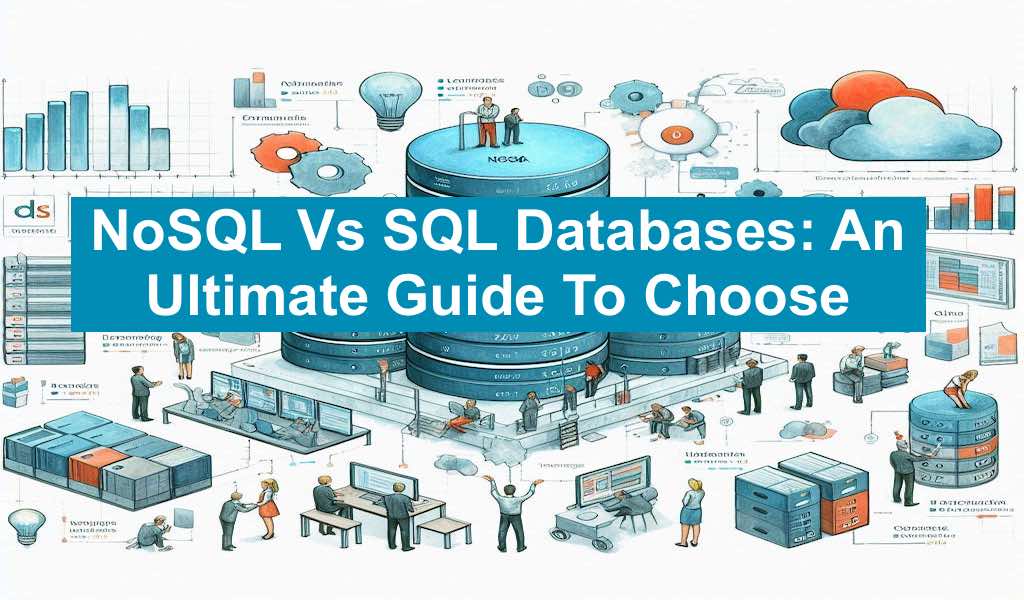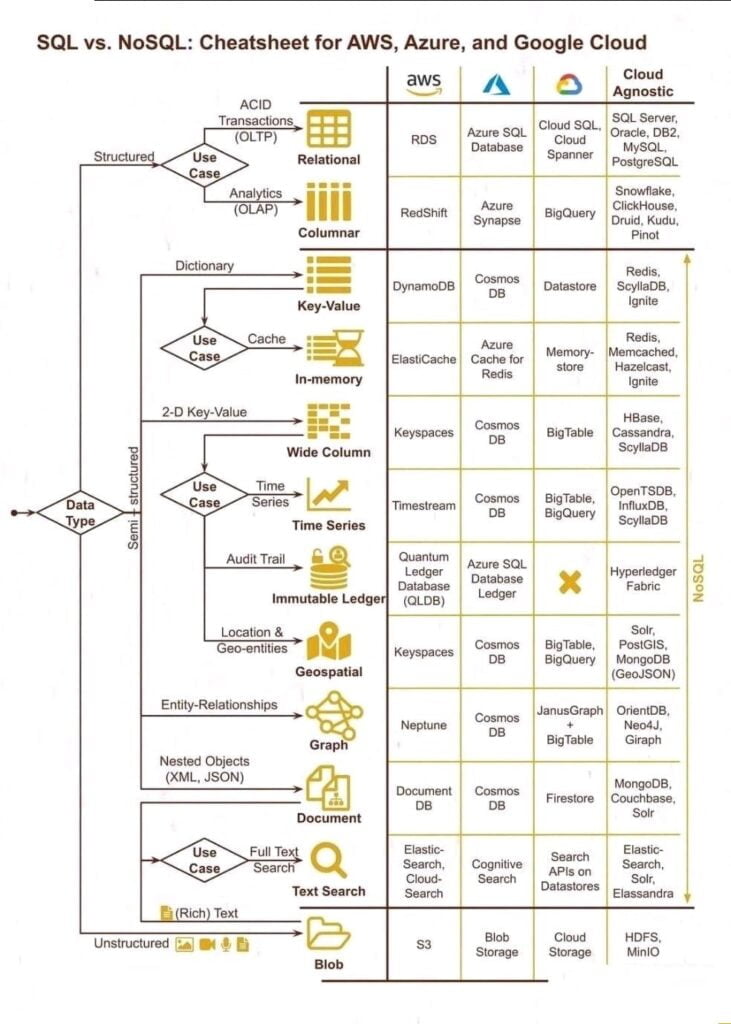
NoSQL and SQL are the two different type of databases that are widely used to store and manage data. Each comes with distinct key differences that have its own advantages and drawbacks. Let’s delve into this beautiful world of databases to understand their unique characteristics
Table of Content
Introduction
SQL databases are relational databases where as NoSQL databases are not relational which means they do have different structures (not rows and columns) and have flexible schemas. Structured query language, or SQL, is used by SQL databases, which have preset schemas. NoSQL databases have dynamic schemas for unstructured data. NoSQL databases achieve horizontal scalability, whereas SQL databases achieve vertical scalability.
Let’s explore the interesting worlds of NoSQL and SQL databases, their distinctions, and how to choose one over the other.
SQL Databases
The intriguing history of SQL started in the late 1960s, motivated by the desire to enhance database performance. An important part was played by English computer scientist Edgar Frank (Ted) Codd of IBM. Relational databases first appeared in computer science with Codd’s seminal paper “A Relational Model of Data for Large Shared Data Banks” published in 1970.
As SQL standards developed over time, businesses such as Microsoft, IBM, and Oracle produced relational database management systems (RDBMS), which effectively employ SQL for database interaction. MySQL and other open-source databases have increased SQL’s accessibility for a wider audience. SQL is now widely utilized on many cloud and physical platforms, including Google Cloud, Azure, and Amazon.
Characteristics of SQL Databases
- Structured Data Model: SQL databases organize data into tables with a predefined schema. A schema defines the structure, including tables, fields, data types, and relationships.
- Tables: These are the foundational units of a database, representing entities (e.g., customers, products, transactions). Rows contain individual records for each entity, and columns store specific attributes (e.g., customer names or emails).
- Keys: SQL databases enforce consistency through primary keys (uniquely identifying each record) and foreign keys (establishing relationships between tables).
NoSQL Databases
The fascinating journey of NoSQL databases began with a need for flexibility, scalability, and handling diverse data types. The NoSQL name was introduced in 1998 byCarlo Strozzi. He coined the term ‘Strozzi NoSQL’ for his lightweight, open-source database. Despite avoiding the standard SQL interface, it retained a relational structure.
Around 2009, the concept of NoSQL databases gained broader recognition. These databases were designed to address the limitations of traditional relational databases, especially when dealing with web data, unstructured information, and the need for faster processing.
Key Milestones:
- Graph Database Neo4j (2000): Introduced a graph-based approach for managing relationships.
- Google BigTable (2004): Pioneered the concept of Big Data storage and retrieval.
- CouchDB (2005): A document-oriented NoSQL database that excelled at handling unstructured data.
- Amazon Dynamo Research Paper (2007): Laid the groundwork for distributed, highly available databases.
- Facebook’s Cassandra Project (2008): Open-sourced a highly scalable, distributed NoSQL database system.
Characteristics of NoSQL Databases
- Flexible Data Structures:
- Unlike SQL databases that enforce a fixed schema, NoSQL databases allow for dynamic schema. You can accommodate changing data structures without predefined tables and columns.
- NoSQL databases handle unstructured or semi-structured data effectively, making them suitable for diverse use cases.
- Horizontal Scalability:
- NoSQL databases are designed for scalability. You can easily scale out by adding more nodes to a database cluster.
- This flexibility allows NoSQL databases to handle large amounts of data and high user loads.
- Types of NoSQL Databases:
- Document-Based: These databases store data in documents (e.g., JSON, BSON). Each document can have varying structures, making them ideal for applications with evolving data requirements.
- Key-Value Stores: These databases use a simple key-value model. They are efficient for caching, session management, and storing user profiles.
- Column-Oriented: NoSQL column stores organize data into columns rather than rows. They excel at handling large volumes of data and complex queries.
- Graph Databases: Designed for managing relationships between entities, graph databases excel in scenarios like social networks and recommendation engines.
- Optimized for Large Data Volumes:
- NoSQL databases handle structured, semi-structured, or unstructured data efficiently.
- They prioritize low latency and can support a large number of concurrent users.
Key Differences Between SQL and NoSQL
- Data Structure:
- SQL: Structured data models enforce a predefined schema where data must fit into tables with specific columns and data types.
- NoSQL: Adopts a flexible, schemaless approach, handling diverse and dynamic data with more emphasis on scalability and speed.
- Use Cases:
- SQL: Ideal for applications with well-defined schemas, complex queries, and transactions (e.g., financial systems, e-commerce platforms).
- NoSQL: Suited for scenarios requiring high scalability, rapid development, and handling unstructured or semi-structured data (e.g., social media, IoT, real-time analytics).
- Industry Applications:
- SQL: Widely used in traditional enterprise applications, reporting, and business intelligence.
- NoSQL: Commonly found in modern web applications, mobile apps, and big data processing.
How To Choose?
The decision depends on several factors:
- Workloads: Consider the type of workloads you plan to support.
- Data Structure and Amount: Evaluate the structure and volume of data.
- Database Products: Compare maturity, stability, licensing fees, vendor support, and developer communities.
Below figure depicts the general criteria for selecting SQL databases and NoSQL databases.

Remember that there’s no one-size-fits-all answer. Analyze your specific requirements and choose the database technology that aligns best with your project’s needs.
Learn more about databases
- Oracle 19C Database
- AWS Redshift Vs Snowflake: How To Choose?
- SQL Most Common Tricky Questions
- Oracle Interview Questions
- SQL Interview Questions for Beginner Level
- NoSQL Database by AWS
